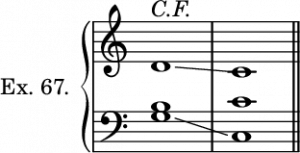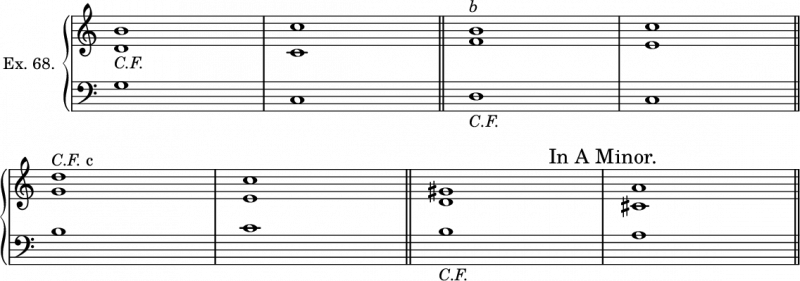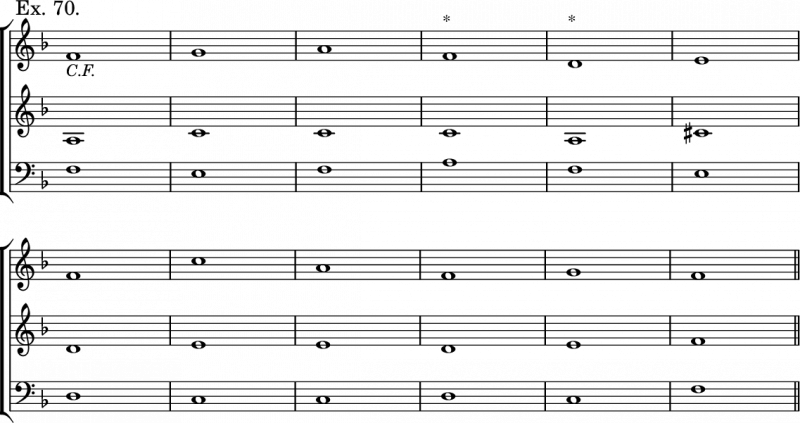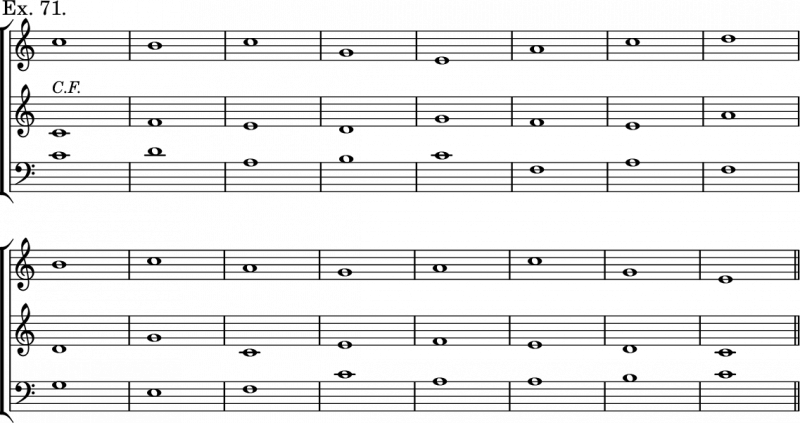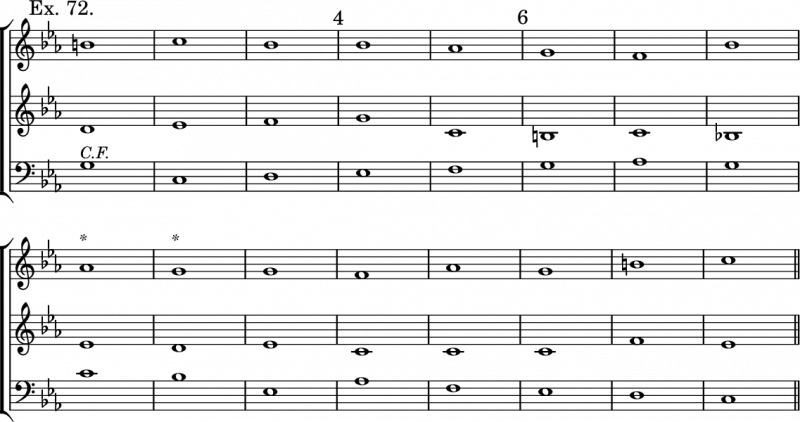Counterpoint (Bridge): Chapter 6
First Species in Three Parts
Note Against Note
Three-part counterpoint includes the same species, and, generally speaking, is bound by the same rules, as two-part counterpoint. 1) The additional part in this and the other species is composed of notes of equal value with those of the cantus firmus.
The chords used are the triad (major and minor, not diminished) and its first inversion, the chord of the sixth. It is not always easy to use a complete chord (though this should be done when possible), and then one or other of the intervals should be doubled, avoiding the doubled major third and doubled leading-tone. It is also well to avoid having two sixths or even two minor thirds in the same chord, but this rule may be frequently disregarded for the sake of a flowing counterpoint. Although the diminished triad is not available, its first inversion, the chord of the sixth on the supertonic, may be used freely.
It should be observed that three different notes must be used in every chord except in the first and last bars, the only places where the unison may be used in this species.
The first bar should contain a triad, complete or incomplete, but if the third be wanting, it will be better to omit the fifth also, the counterpoint being then in unison or octave.
The presence of a third part causes the rules respecting hidden consecutives 2) to be less stringent, particularly as regards the inner and one of the extreme parts, between which similar motion to the fifth or octave is frequently necessary to secure a smooth and, in other respects, correct progression. The upper part of the two in question should, if possible, move conjunctly, the third part being either stationary or moving by contrary motion (Ex. 66, a). All the parts should rarely move in the same direction (Ex. 66, b).
Although, as has been said at the beginning of this chapter, “the rules of two-part remain in force in a great measure as regards the extreme parts of all simple counterpoint,” the relaxation of the rule as to hidden octaves is most useful at the cadence when the cantus firmus is in the upper part (Ex. 67).
Hidden fifths between the extreme parts are seldom necessary or advisable in less than four parts.
The parts must be kept as equidistant as possible, and may cross occasionally if required.
The cadences are as in Ex. 68; those at b and c may be used in the course of the counterpoint. The first of the two chords forming the cadence should be complete, and the second may be in unison or octave. If the third was used in the final chord of an example in the minor key it was formerly always made major; this is not now imperative, but is sometimes effective.
Musical Examples
Observations on Examples 69-72
Ex. 69: The cantus firmus begins and ends on the dominant of A minor. The final chord being the dominant has a major third.
Ex. 71: The old writers would have ended with a bare fifth, which is, however, not now necessary.
Ex. 72: Between bars 4 and 6 it is possible a false relation may be considered to exist; the major third on the dominant (bar 6) is, however, so welcome that the author does not hesitate to use it here.
Ex. 69, 70, and 72: At the bars marked * all the parts move by similar motion, not generally advisable (see the rule just above Ex. 66); being all chords of the sixth, however, and in close harmony, there is nothing objectionable in the effect.

